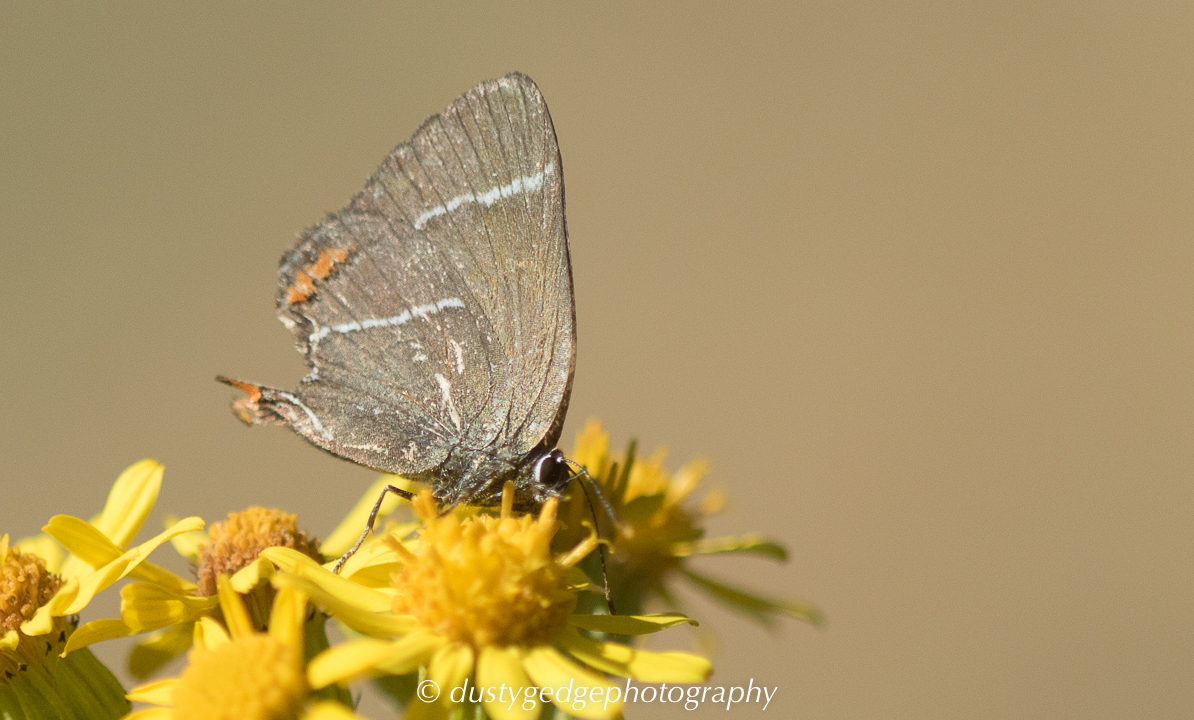The hairstreak moved around the ragwort unperturbed. For ten minutes it slowly worked the golden florets. It only opened its wings for a brief aerial dispute when a Common blue came in and disturbed it. I never saw the flash of blue on its upper wings as it flew. Within seconds it returned to feeding oblivious of my camera.
The White-letter hairstreak is rarely seen. Spending most of its time high in the trees, it rarely ventures to the ground to feed. I have only ever seen two in the 30 years I have been watching butterflies on Blackheath. In 2011 I saw one resting on a large pink rose of all things.
I am sure there are more, for the Heath has a scattering of Wych elm around its perimeter. There are stands on the Point, at Vanburgh pits and on the butterfly bank as I call the bank adjacent to Hyde Vale.
The decline of the White-letter Hairstreak
Sadly its population fluttered downhill in the when Dutch elm disease ravaged the trees it relies on. The population is said to have dropped by 96% in the last 40 years. What it’s population was on Blackheath was back then I know not, but I suspect it was common.
It is only up in the canopy that one get the chance to witness its blue patched upper wings. When it feed on flowers, it keeps its wings tightly clasped. I would like to see this but I will probably never climb up to view them among the leaves.
So when I walk through the Wych elm scrub, perhaps, they are there with their wings spread. Let’s hope so. I would like to think my two sightings over the years are a glimpse of a healthy population on Blackheath.

